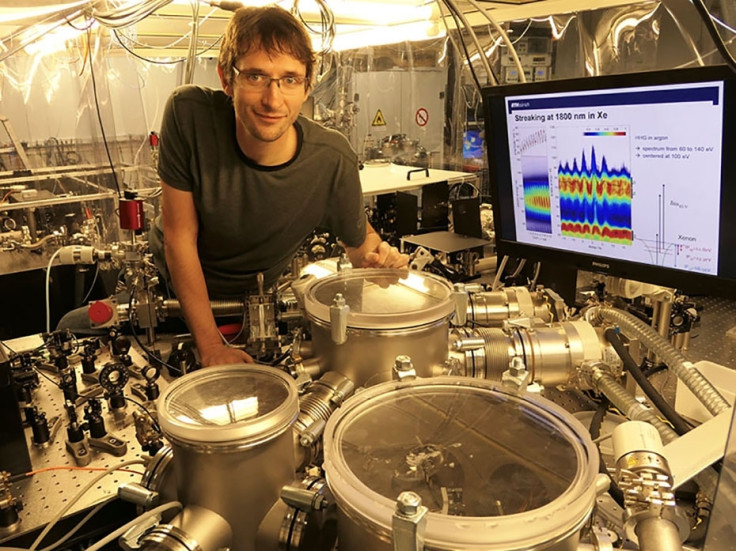World's shortest laser pulse can help scientists observe electrons in super-slow motion
This is the shortest controlled event ever created and can contribute towards the development of more efficient solar cells.

Researchers have created the world's shortest laser pulse to help scientists study the movement of electrons in super-slow motion.
According to a report in Engadget, a team from ETH Zurich produced an X-ray pulse for a duration of 43 attoseconds (1 attosecond equals one quintillionth of a second). This is the shortest controlled event ever created by humans and is fast enough to help scientists observe how electrons move within a molecule or how chemical bonds are formed – processes that are too fast to study – in unprecedented detail.
The group, led by ETH Zurich professor Hans Jakob Worner, used an infrared laser to produce soft X-ray pulses with large spectral bandwidth. This enabled them to observe several elements for the first time ever.
The observations from the shortened laser pulse could lead to the development of advanced and more efficient solar cells. Scientists could use this technology to study the process of electricity generation step-by-step and further optimise the efficiency of the next generation of photosensitive elements.
But the benefits of this breakthrough go way beyond observational uses. As Worner explained, chemical reactions can also be tweaked since the laser pulse's time scale is almost similar to that of electron movement. It can be used to break a chemical bond at the right time and location in the molecule.
Moving ahead, Worner and his team aim to create even shorter laser pulses to study more elements in detail.





















